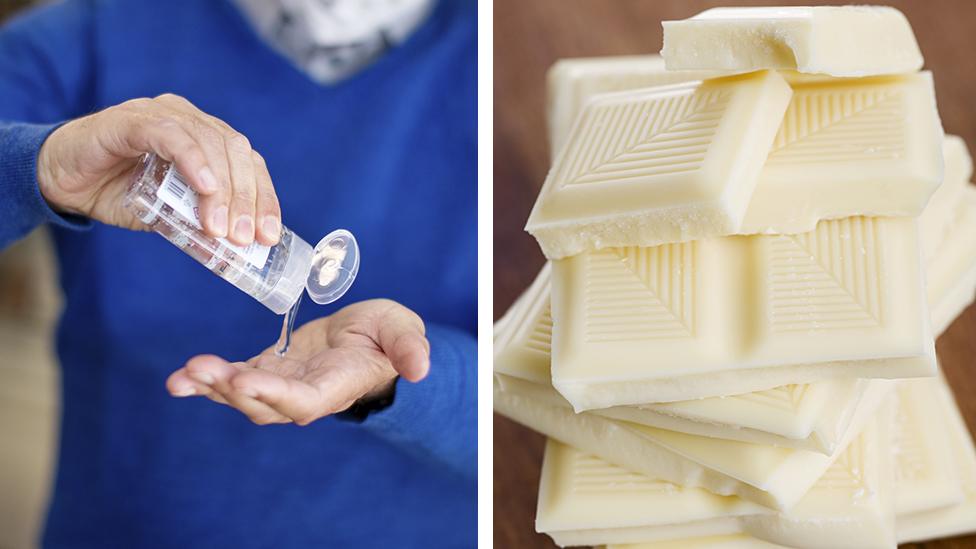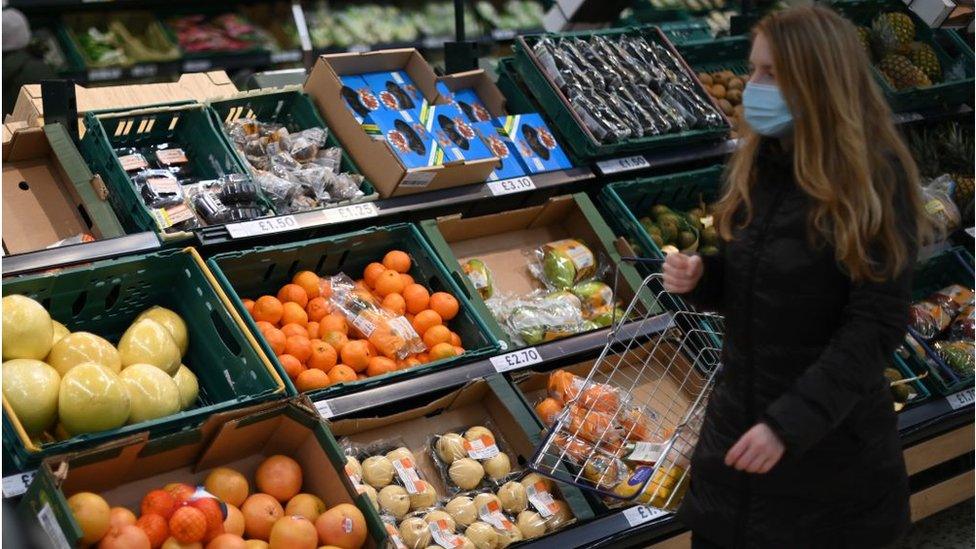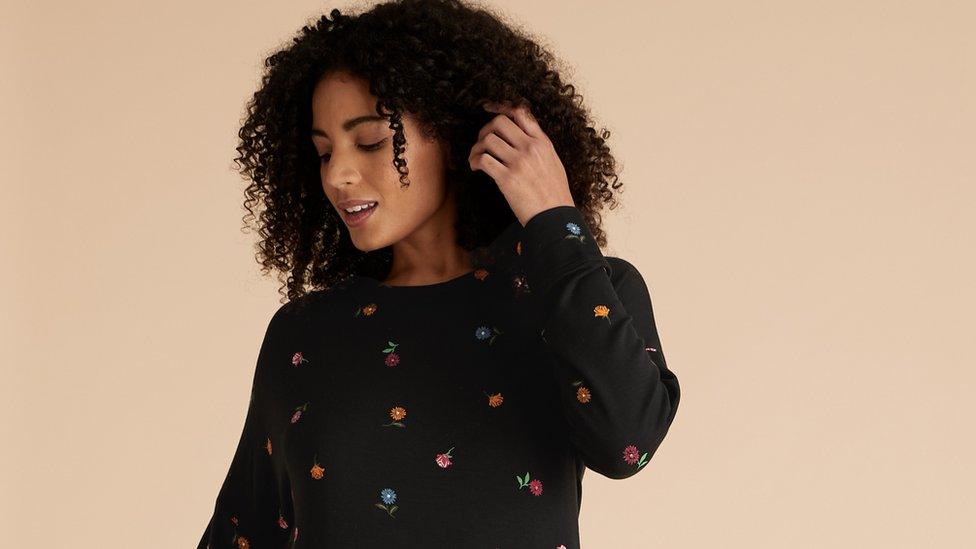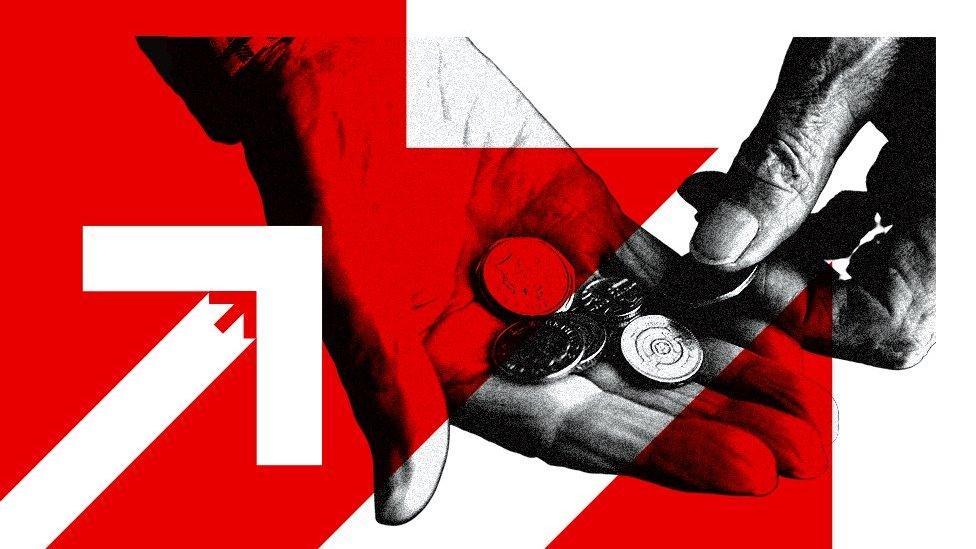Cost of living: Hand gel in, white chocolate out
- Published
- comments

High demand amid the pandemic for items such as hand sanitiser and loungewear mean they are now being used to calculate the cost of living in the UK.
Hand weights used by gym-goers who are stuck at home have also been added to the basket of goods used to measure the movement of prices.
The annual review by the Office for National Statistics (ONS) also added smartwatches and electric cars.
But white chocolate and sandwiches bought at work are out.
The ONS said it decided to add men's loungewear bottoms and women's sweatshirts to the basket of more than 700 goods, which is used to calculate inflation, to reflect a move towards more casual clothing.
"This is especially relevant as the coronavirus lockdowns appear to have accelerated this trend and retailers are increasingly labelling clothing items as loungewear," said Sam Beckett, head of economic statistics at the ONS.
Retailers such as Boohoo and M&S have recently reported a boost in sales because of pandemic fashionistas buying comfy joggers and hoodies.


But the ONS's list also included less obvious picks such as smartwatches, which have been used to track exercising at home, and WiFi lightbulbs, as people stuck indoors during lockdown upgraded their living spaces.
Hybrid and electric cars were also added to the basket as the UK moves closer to 2030, when sales of new petrol and diesel cars will be banned.
White chocolate bars are no longer in favour, and were removed from the basket, replaced by Maltesers and other malted chocolate sweets.
Ground coffee was swapped for coffee sachets, and Axminster and Wilton carpets were taken out because they are mainly being bought for commercial spaces.
Changing consumer habits
Some 180,000 prices are measured across thousands of UK outlets to calculate inflation, which is used as a benchmark for our finances.
This basket of goods reflects contemporary habits and technology to work out the inflation rate, which charts the changing cost of living.
The ONS also aims to ensure that each sector of goods and services, and where items are bought, are reflected adequately in the calculations.
That is why, for example, fresh fruit and vegetable smoothies were added, to allow the ONS to follow a growing healthy-eating trend, it said.
"These annual changes are only a small percentage of the items sampled," Ms Beckett pointed out.
"This year we've added 17 items, removed 10 and left 729 unchanged."
Last year, reusable drinking bottles and gluten-free cereals were added to reflect changing consumer behaviour linked to rising environmental concerns and food allergies.
- Published17 February 2021

- Published8 January 2021

